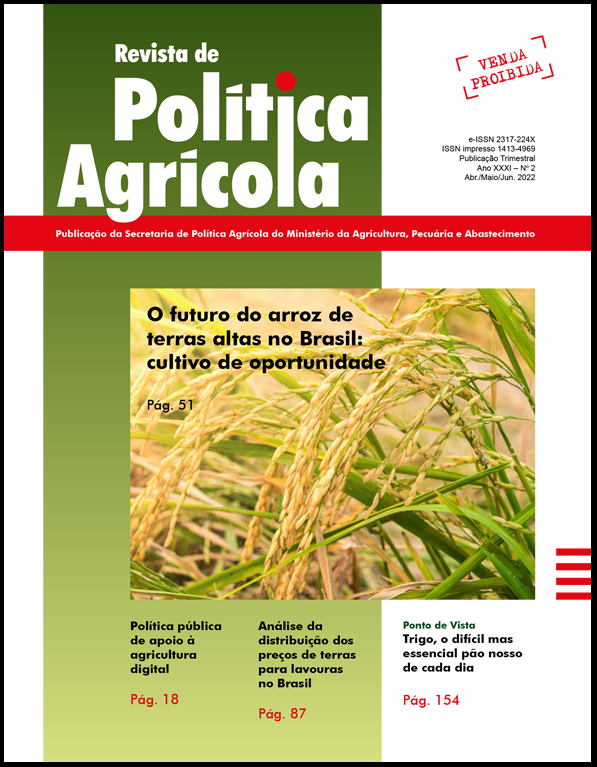Analysis of the farmland price distribution in Brazil
Keywords:
Regional economy, agricultural frontier, land market.Abstract
In this article, we evaluate the differentials of Brazilian farmland prices for the period from 2003 to 2017, elucidating the factors that may have led to the probable convergence of these prices. In this study, we adopted the Psycharis´ new method of descriptive analysis and used the data on cropland prices published by the Informa Economics consultancy (FNP). These analysis outputs were evaluated considering the backgrounds of classic regional economics. The results indicate that the mentioned period may have been characterized by the price convergence of agricultural lands mainly conditioned by the increasing international demand for agricultural commodities. The increase of prices of certain products has broaden, for instance, the physical distances within which soybean cropping has shown to be not only economically viable, but also more competitive than traditional activities, such as extensive cattle raising. In addition, investments in the transport sector – such as road paving and port infrastructure construction in the North and Northeast regions – reduced the transport costs and reinforced the effect of expanding the agricultural frontier. Consequently, the grain production moved toward areas previously occupied by extensive cattle raising, increasing their value. Therefore, there are indications that the process of cropland price convergence was associated with the agricultural frontier expansion and with the development of less favored localities, creating new farmland price clusters.Downloads
Published
2022-07-08
How to Cite
Harbs, R., & Bacha, C. J. C. (2022). Analysis of the farmland price distribution in Brazil. Revista De Política Agrícola, 31(2), 87. Retrieved from https://rpa.sede.embrapa.br/RPA/article/view/1726
Issue
Section
Artigos Científicos


